The primary goal of this research is to determine whether using genetic characteristics to inform Coho Salmon matings in the Sandy River Hatchery improves reproductive success, which is defined as the number of offspring produced by a spawning pair. In 2019, 2020, and 2021, Coho Salmon mate pairs were identified and spawned based on their genetic characteristics while a second group of mate pairs were selected at random (i.e., the typical approach used in a hatchery setting). In years following (2021 – 2024), returning Coho Salmon identified as offspring were used to estimate the reproductive success of the genetics-based mating approach and random pairing of parents in the hatchery. The ~4,000 Coho Salmon returning in 2024 represent the last year of potential offspring associated with this study.
Drs. Kathleen O’Malley and Kevin Olsen of the State Fisheries Genomics Lab have taken over the project following Dr. Michael Banks’ retirement. The 2024 samples are currently being processed in the lab and data analyses and report writing are scheduled to be completed by June 30th, 2025. The results of this research may provide valuable information to hatchery managers on whether or not to incorporate the particular genetic characteristics evaluated in this study while pairing Coho Salmon mates in Sandy River Hatchery.
Genetically Informed Mate Pairings in Coho Salmon
(2014 - present)
Meet the Team
-

Dr. Kathleen O'Malley
Principal Investigator
ODFW State Fisheries Geneticist
Faculty at Oregon State University
-

Dr. Kevin Olsen
Researcher
Post-doctoral scholar at Oregon State University
Other contributors
Dr. Michael Banks (retired OSU), Dave Jacobson (COMES, HSMC), Heather Auld (COMES, HMSC), Drummond Wengrove (COE, HMSC iLAB), Spencer Tanenholtz (COE, HMSC iLAB), Rahul Kumar (COE, HMSC iLAB), Charles Baker (ODFW), and Ryan Queen (ODFW)
Methods
The first phase of the study (2016-2017) was a whole genome analysis of fish from the Rock Creek Hatchery on the North Umpqua River. The second phase (2018) consisted of optimizing genotyping for efficient use in hatcheries. Finally, the third phase (2019-2024) used field testing at Sandy Hatchery, where the team used a novel genomics tool and fin clipping technology to optimize mate choice in the hatchery. Currently researchers are analyzing these data to provide policy recommendations to hatchery managers (2024-2025).
Developing New Technologies for Rapid Mate Selection
Fin-clipping, genotyping, and selecting mate pairs on a hatchery spawning day posed a serious logistical challenge for this project because processing tissue genetics is typically done in a lab and data are processed on a powerful desktop computer. Researchers developed an automated fin clipper (VALUETAGGER, pictured right) and a nimble computer code (MultifacetedCHOICE, pictured below) to speed up the process and allow gamete fertilization the same day.
Publications
Auld H.L., Jacobson, D.P., and M.A. Banks. 2021. Differences in mate pairings of hatchery- and natural-origin coho salmon inferred from offspring genotypes. Integrated Organismal Biology 3(1): obab020. https://doi.org/10.1093/iob/obab020
Auld, H.L. Noakes, D.L.G, and M.A. Banks. 2019. Advancing mate choice studies in salmonids. Reviews in Fish Biology and Fisheries. https://link.springer.com/article/10.1007/s11160-019-09551-5

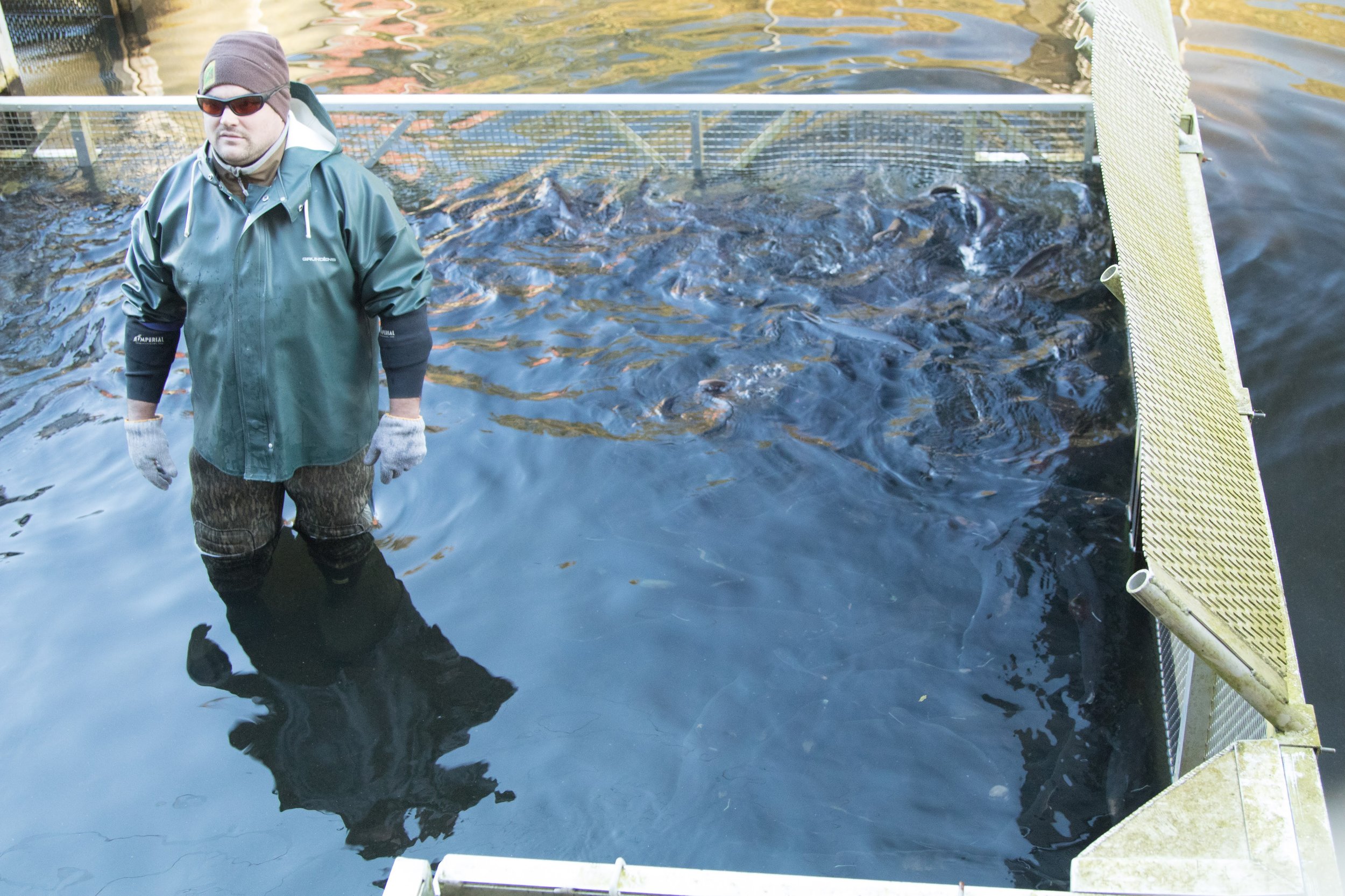
Sandy River Hatchery personnel gathering hatchery fish on a spawning day
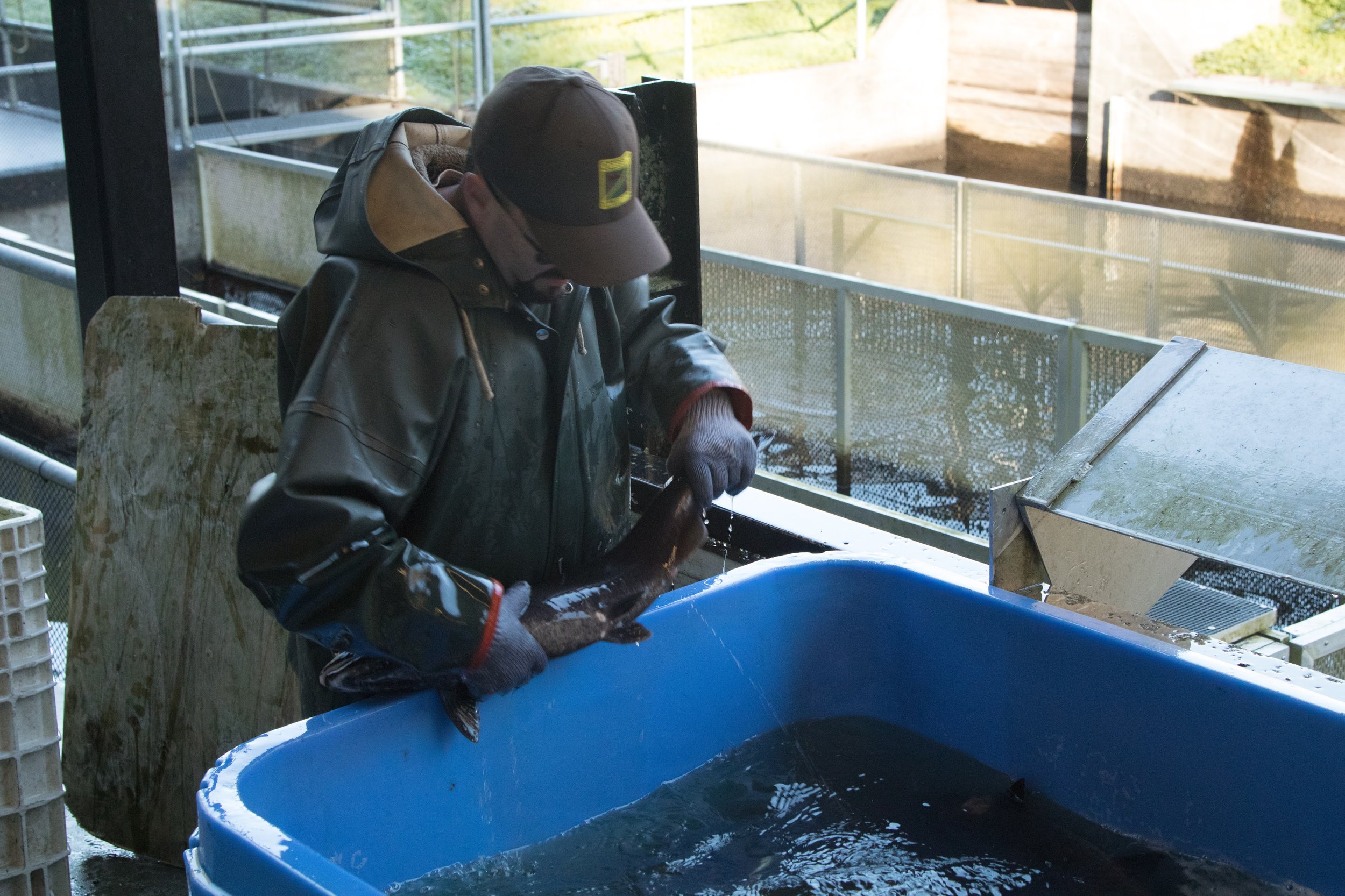
Sandy River Hatchery personnel checking fish for ripeness
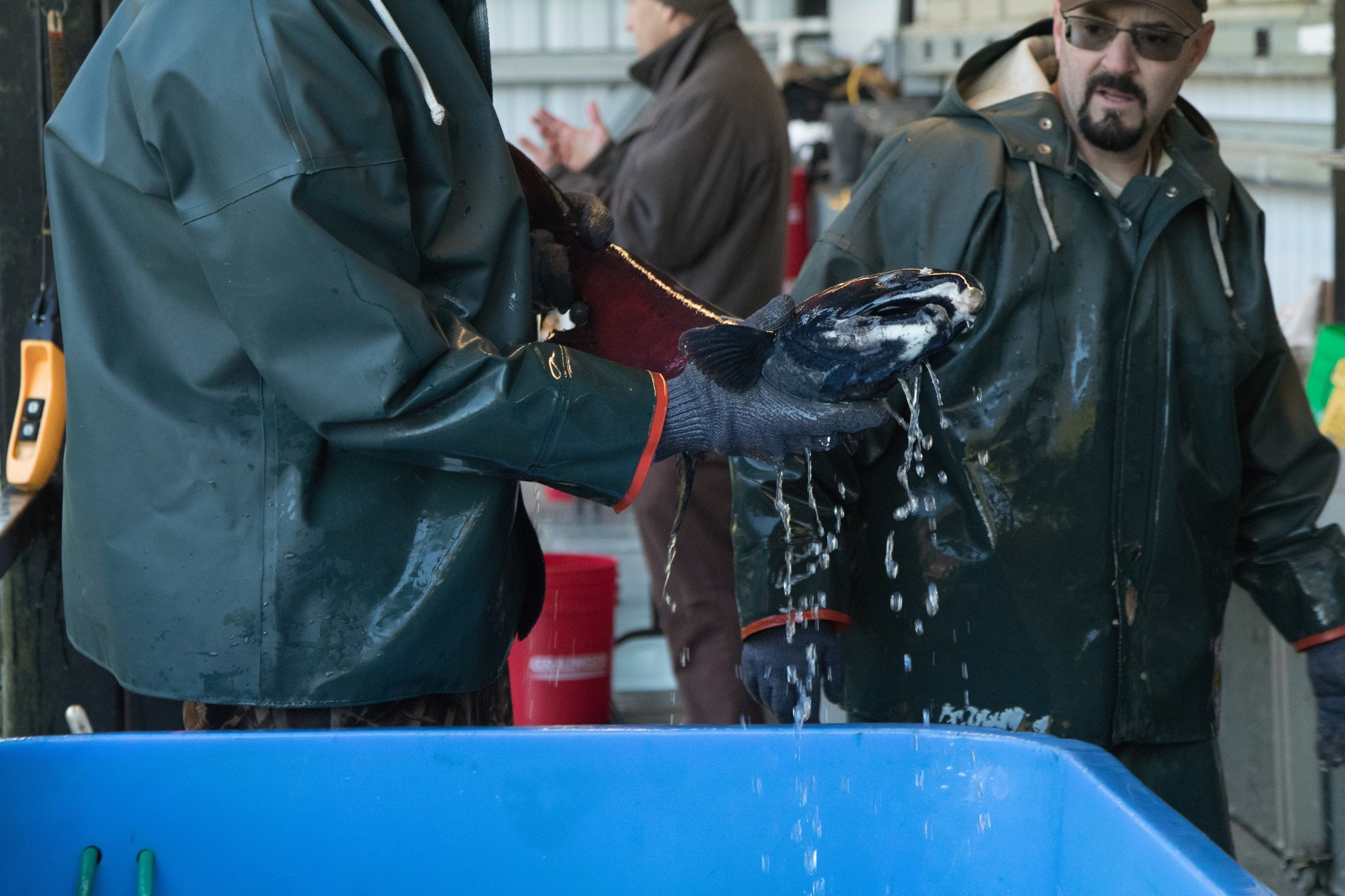
Hatchery staff transporting fish
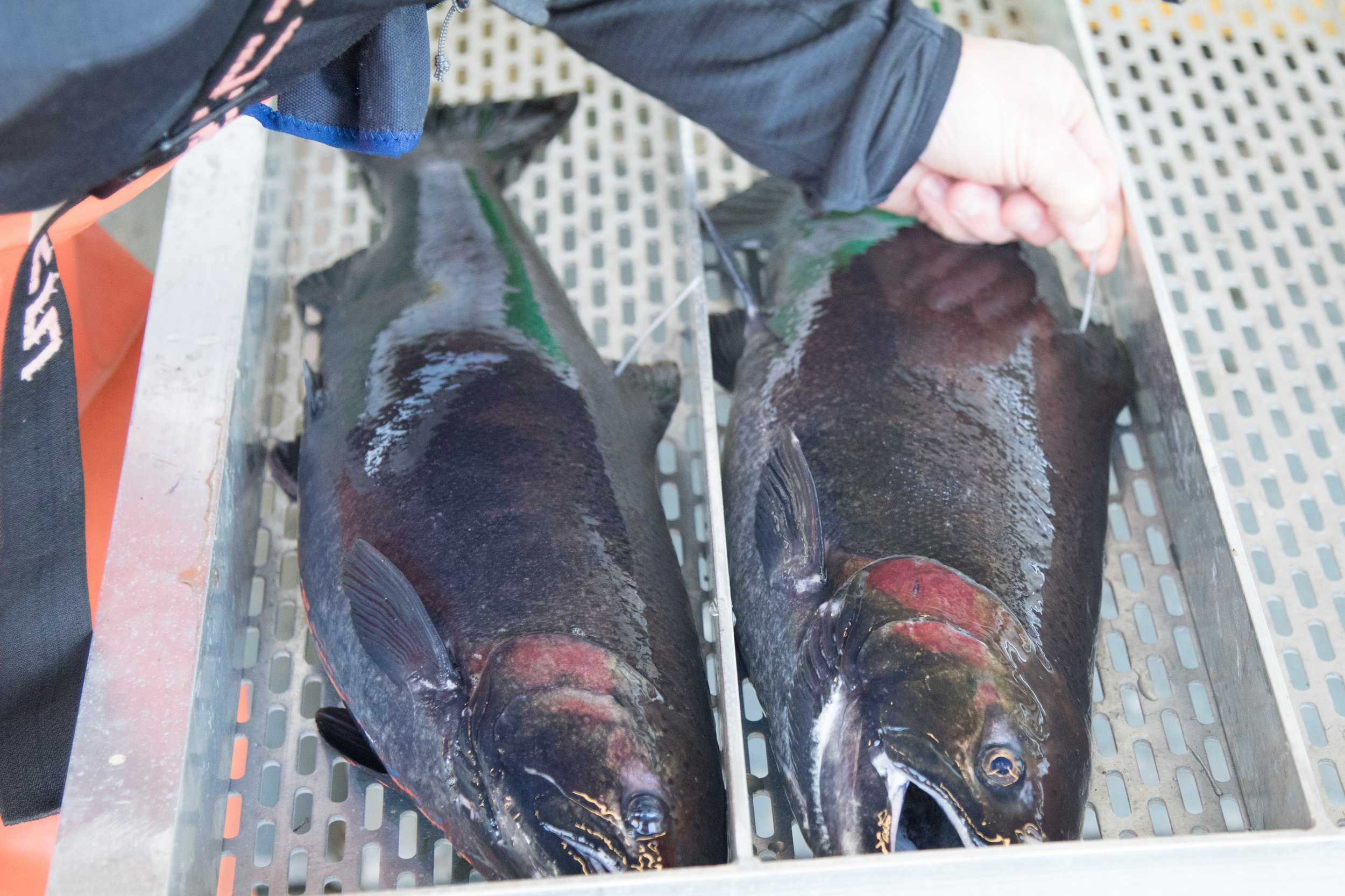
Researchers individually tagging coho salmon broodstock while mate selections are being prepared

Tagged coho salmon
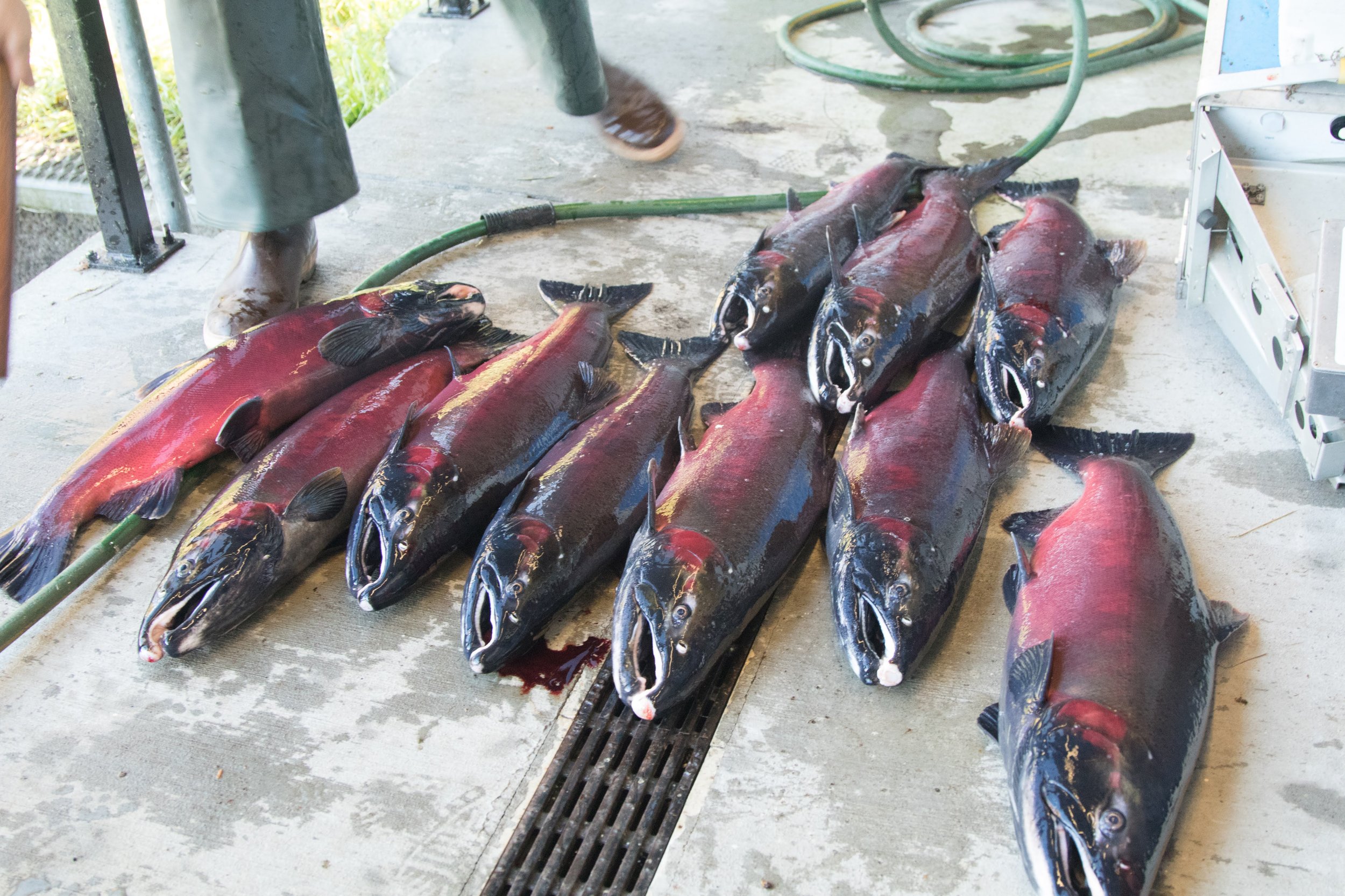
Coho salmon broodstock

Coho salmon broodstock

Fertilized coho salmon eggs
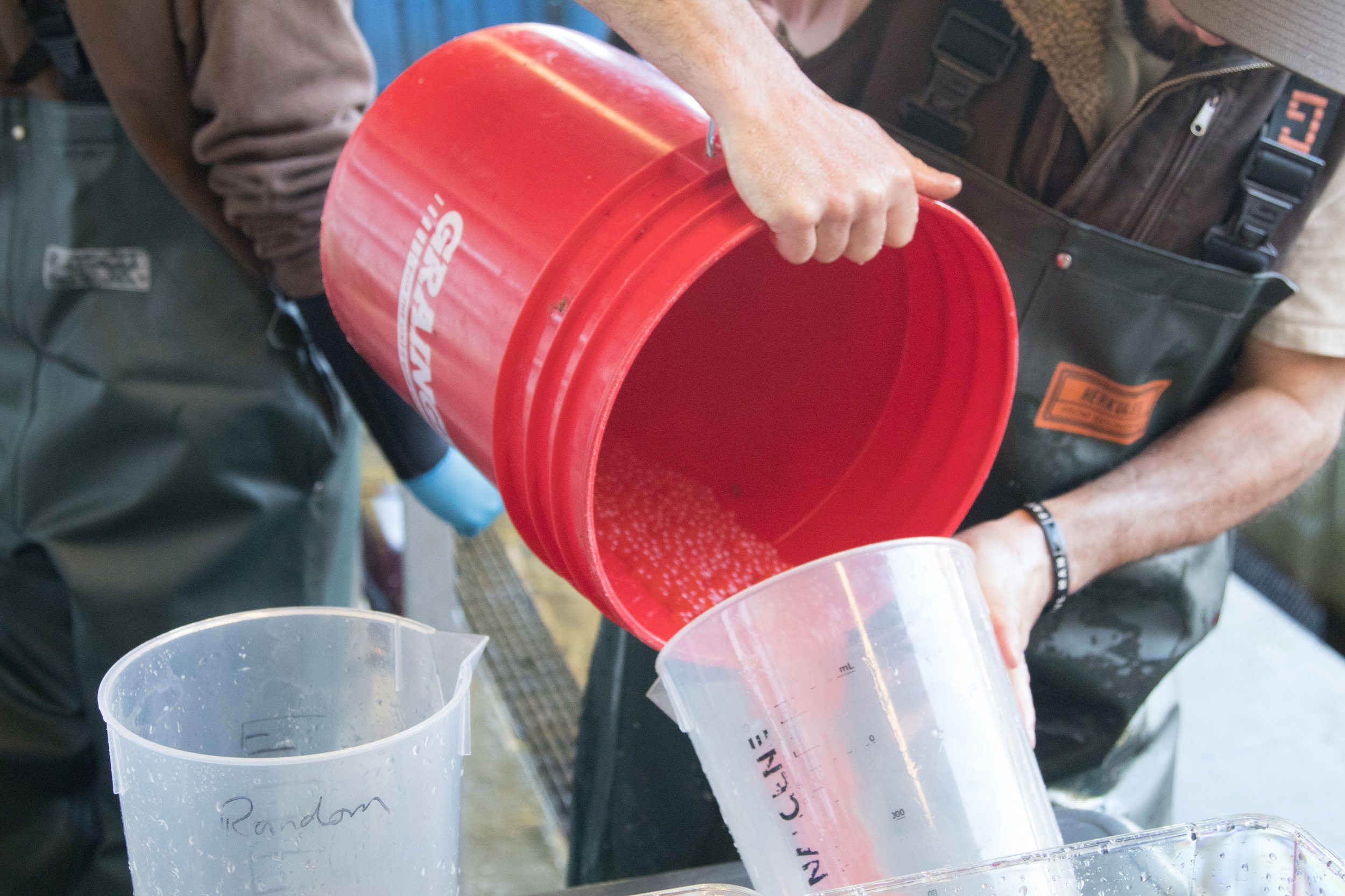
Transporting coho salmon eggs

Retrieving coho salmon eggs from a female, sampling performed for routine pathogen testing
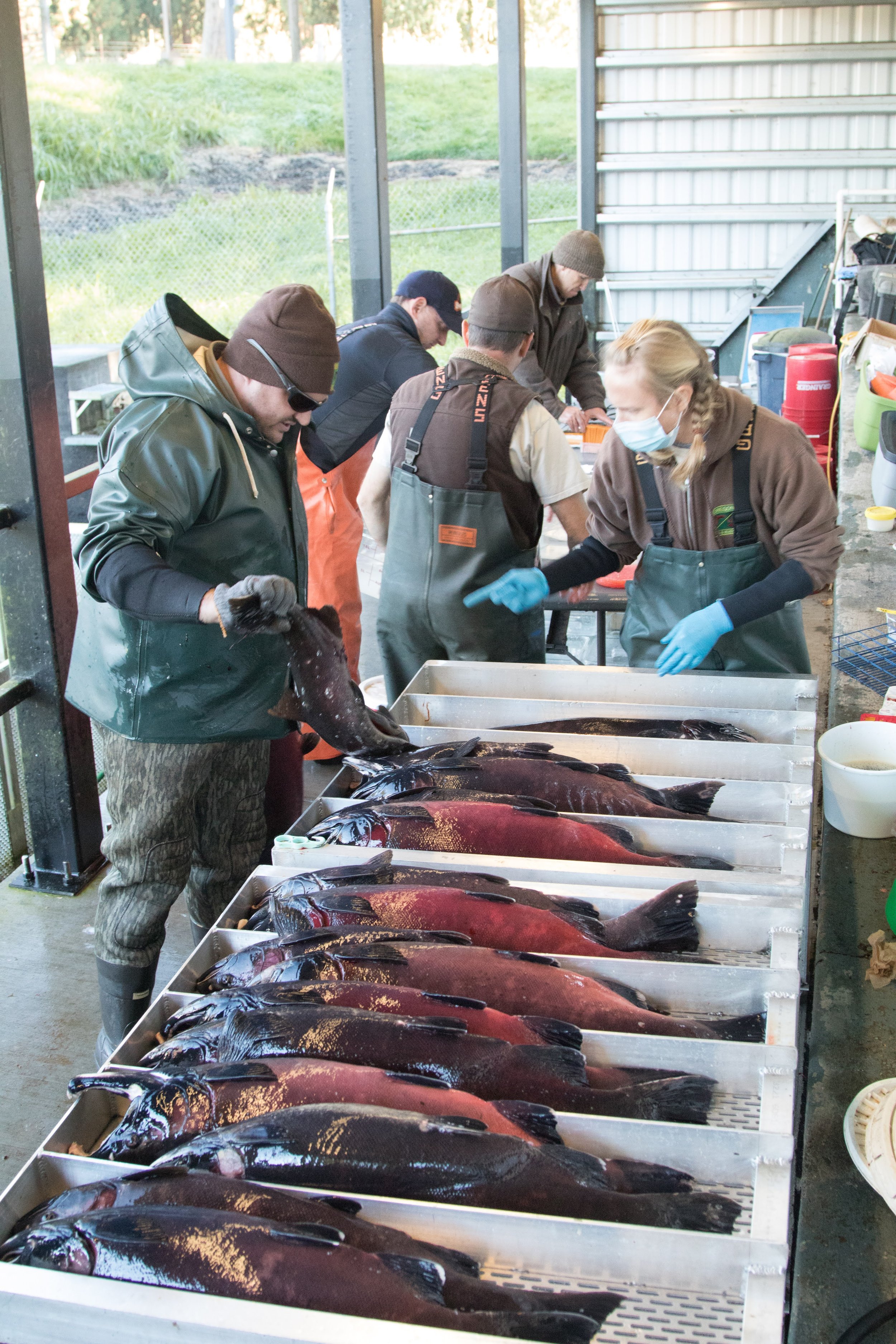
Coho salmon organized for the study

Hatchery staff transferring eggs
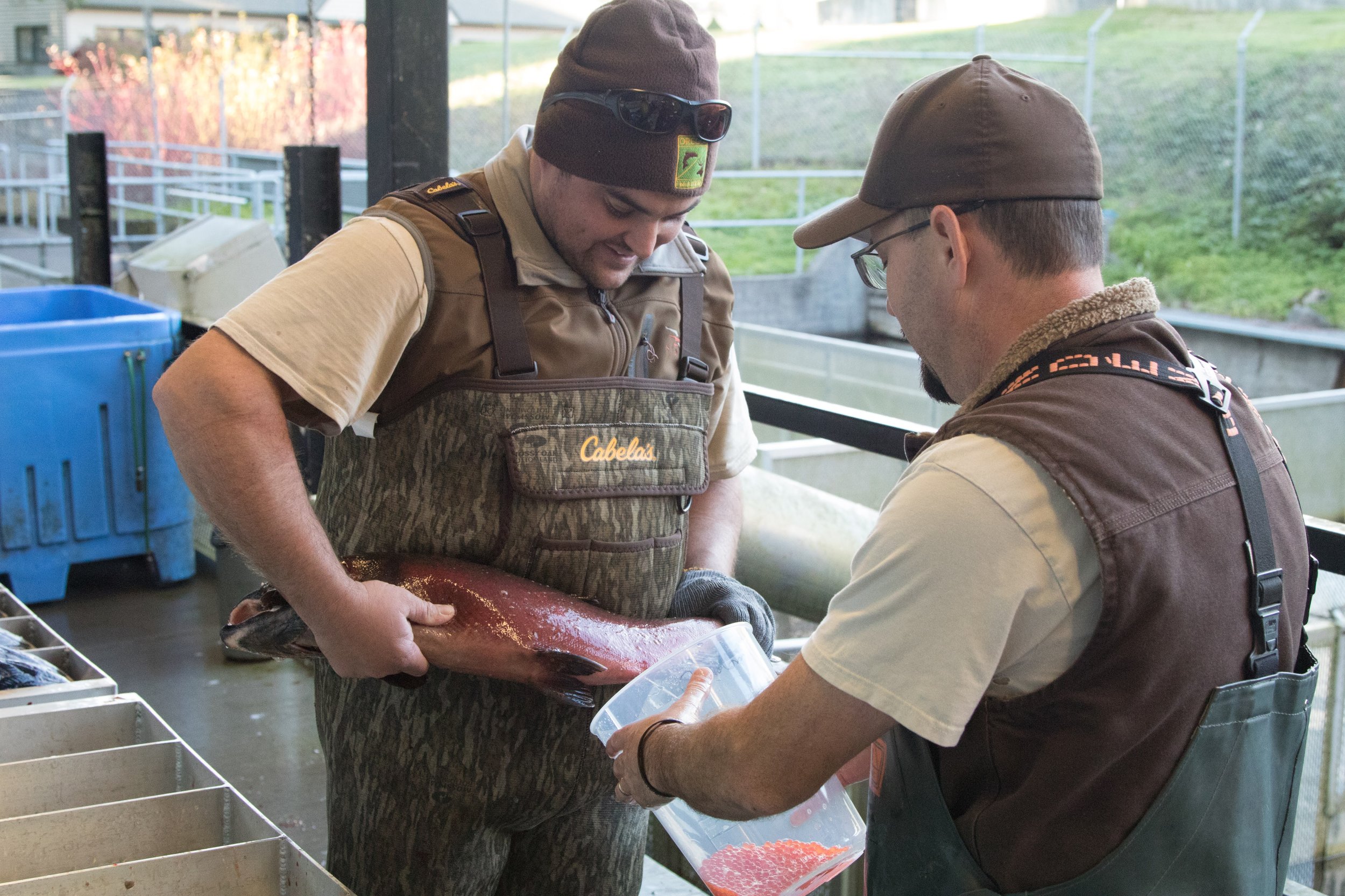
Hatchery staff collecting coho salmon eggs

Hatchery staff fertilizing coho salmon eggs

Dr. Michael Banks cleaning off materials

Fish ladder at the Sandy River Hatchery

